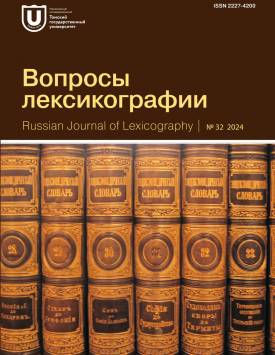The implementation of the cognitive model “human – weapon” in Russian poetic texts (based on dictionaries of images)
The article examines the implementation of the metaphorical model “human - weapon”, which plays an important role in the linguistic conceptualization of human as the main object of study of modern linguistics. The military metaphor is important in objectifying human experience, which is reflected in image dictionaries. The aim of the work is to characterize the metaphorical models through which the basic cognitive model “human - weapon” is structured, based on the material of image dictionaries, which determines the novelty of the study. The material of the article is over 400 implementations of this model (comparative tropes) extracted from fragments of Russian literary texts presented in image dictionaries. Research procedures such as continuous sampling, descriptive method, modeling, and contextual analysis were used. The realizations of metaphorical models were classified according to the sphere of the target (the person as a whole; the external person; the internal person) and according to the sphere of the source (types of weapons). The signs of comparing a person with a weapon were revealed; the most significant subjects and objects of comparison were determined. Through the metaphors of weapons in Russian literary texts, almost the entire person receives understanding: human personality, body parts, organs, actions, feelings, emotions, mental states, thoughts. The most detailed representation is of a person’s face, primarily eyes, which are not only a noticeable detail of the external appearance, but also an important source of information about a person’s inner world. The “weapon eyes” model has the most voluminous source area, which includes numerous types of weapons and ammunition: arrows, bows, swords, sabers, swords, bullets, rifles, gunpowder, etc. The elements of an external person are compared with weapons of different types according to the signs of sharpness, shape, color, speed of movement, striking action. The inner world of a person is also represented by comparisons with a variety of weapons, a common feature of the comparison is the striking effect. The most traditional and widespread are figurative parallels, the source of which includes the designations of throwing, stabbing and cutting weapons, primarily arrows, as well as swords, spears and blades as parts of cold steel: both the realities of an external person and the manifestations of a person’s inner world are compared with them. Likening a person to a weapon is used when referring to a variety of situations in which a person enters into a confrontation, inflicts and receives wounds, wins and suffers defeats. Implementations of metaphorical models of weapons have a wide range of uses: they describe a person’s appearance, movements, character traits, moods, states, feelings, and attitude towards people. The author declares no conflicts of interests.
Keywords
metaphorical model, dictionary of images, human, weaponAuthors
| Name | Organization | |
| Kupchik Elena V. | University of Tyumen | elwika@list.ru |
References

The implementation of the cognitive model “human – weapon” in Russian poetic texts (based on dictionaries of images) | Voprosy leksikografii – Russian Journal of Lexicography. 2024. № 32. DOI: 10.17223/22274200/32/4
